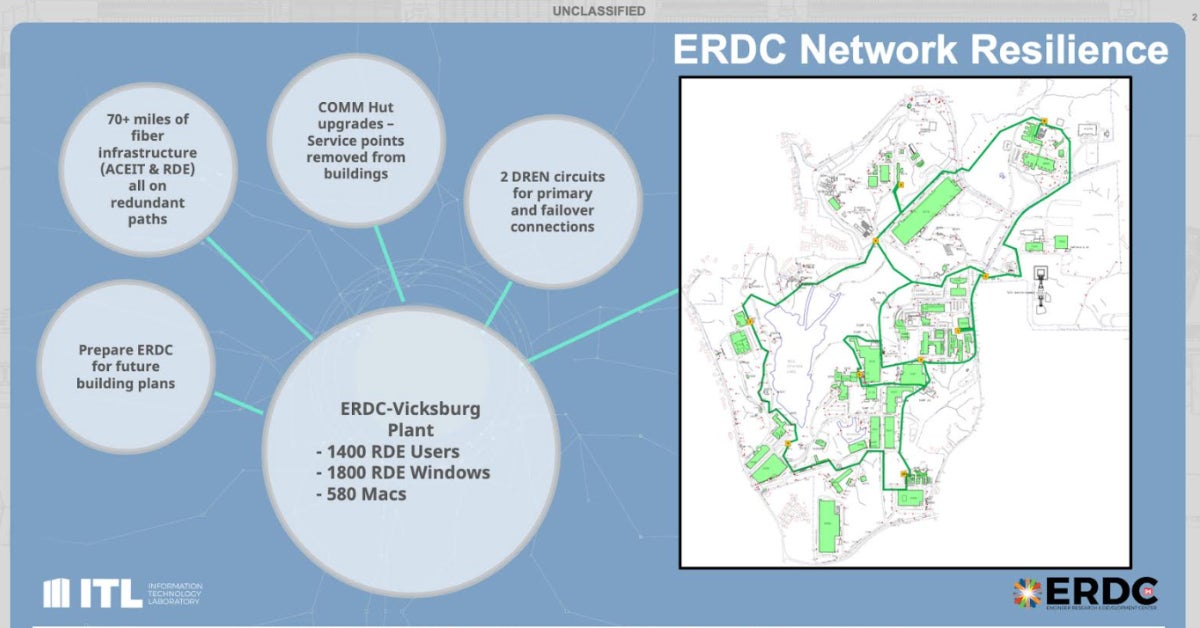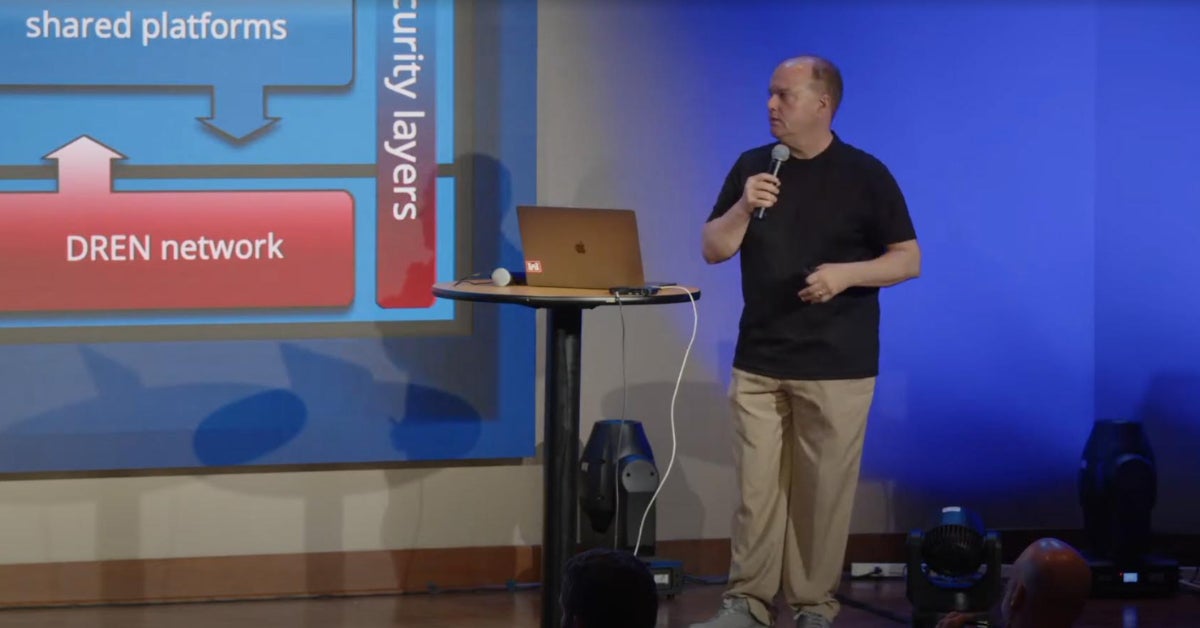ERDC constantly improving world-class computational capabilities
Published 2:30 pm Friday, July 15, 2022
The U.S. Army Engineer Research and Development Center (ERDC) is taking care of its employees and stakeholders by perfecting the tools they use, such as the Research and Development Environment (RDE) network.
Over the years, the RDE has grown into a suite of tools, services and applications that allows engineers and scientists a high-speed network for performing world-class research for the warfighter and civil works customers.
The U.S. Army Corps of Engineers (USACE) has always used Corpsnet, which is an enterprise system that is used by most USACE districts and divisions, but that isn’t specifically designed for research and development. About twenty years ago, the RDE was developed after ERDC leadership realized the need for a network with more capabilities, and today it is under the purview of the ERDC Office of the Chief Information Officer (OCIO). Robert Walker, the deputy chief information officer, and the rest of the OCIO team are constantly asking themselves: how do we make it better?
“Every year, if we aren’t improving, then we are not keeping up with the industry,” Walker said. “If we want to develop world-class products, we need world-class resources. If we want to attract world-class talent, then we have to give them world-class computational capabilities.”
During the RDE town hall earlier this year, the OCIO team showcased new offerings, which included productivity and time-management tools, cloud-hosting services and the ERDC DevSecOps platform 2.0. DevSecOps, which is short for Development, Security and Operations, is a suite of tools that allows ERDC software developers to collaborate with cybersecurity and operations teams from the start of the project instead of waiting until the end.
“Instead of waiting until a project is almost complete, security is able to scan the software from day one so that the developers can find potential security problems early and prepare it for operations much sooner in the process,” said Walker. “This way, when you are ready to officially deploy your product, it’s more prepared for operations from day one.”
Another significant advancement over the years has been the Cloud Computing Environment (CCE), which allows users to request server resources any day of the week or time of the day. The CCE allows users to specify server configurations and storage allocation, instead of being responsible for personal servers or network-attached storage (NAS) devices under their desks. Some of the benefits of using the CCE is the baked-in security, redundancy, and scalability.
Allyson Windham, the computing services lead on the OCIO team, was one of the driving forces behind getting the CCE running after a policy was released from the DOD saying that servers needed to be in an approved data center.
“Prior to the CCE, folks would purchase servers, put them under their desk, and run their workloads,” said Windham. “A large part of my time when I joined the OCIO team was finding these type of configurations and moving them to the DOD-approved CCE.”
At the RDE town hall, the team also introduced a new capability of cloud platform services on the Azure Information Level 4 (IL4) DOD servers. The capability provides a means for researchers to access the variety of tools that are needed for computational analysis at a much lower cost. The scientists and engineers are only charged for the time spent using the tool, which is much more effective from a financial standpoint.
“ERDC could never afford to purchase, install and manage every computational platform offered by commercial partners,” says Walker. “By acquiring Azure IL4 space, and bringing it directly to our ERDC researchers’ desktops, they can now access all the computational platforms that industry has to offer.”
The enhanced capabilities of the RDE have enabled ERDC to utilize digital twin technology to support the rebuilding of Tyndall Air Force Base. When Hurricane Michael came ashore in 2018 as a category 5 hurricane, it left Tyndall Air Force Base completely destroyed. A partnership was formed to repair the base, and ERDC’s Lance Marrano, a lead researcher in Installations of the Future (IotF), was placed there as a science and technology advisor to assist with navigating technological innovations during the complex reconstruction process.
After listening to the wishes of base leadership, Marrano decided that a digital twin ― a digital replica of physical assets, processes, people, and places — of the base was needed to provide decision-makers with quick and easy access to up-to-date data and analyses during the process of this massive construction project.
“That’s what digital twin technology is about, in as realistic and virtual world as possible, recreating the base, the buildings, the roads, the runways, the utilities, and saying ‘now what does that enable us to do?’” said Marrano.
Marrano worked with ERDC’s Information Technology Laboratory to establish an RDE network segment at Tyndall as a home for the Digital Twin prototype. “Without having the Defense Research and Engineering Network (DREN) connection and the RDE services, the digital twin of Tyndall Airforce Base would not have been executed,” he said.
“If we don’t have the right environment or tools to explore these new innovations, then we simply can’t,” he continued. “It is vital that we have capabilities that allow us to experiment, prototype and improve without worrying about putting the mission at risk — it allows us to push the envelope.”
The diligence of the OCIO team has helped position ERDC as a viable competitor against any organization for quality IT computational resources. The staff is constantly learning and training to provide core capabilities and assistance to ERDC engineers and researchers, which ultimately impacts the ERDC mission: supporting the warfighter and the nation.
“We try to keep up with industry so that we can offer our developers and researchers the best tools to help make their job easier — we are really customer-focused,” said Windham. “It is challenging, but the reward is offering tools that help different domains; from the warfighter to the environmentalists.”







